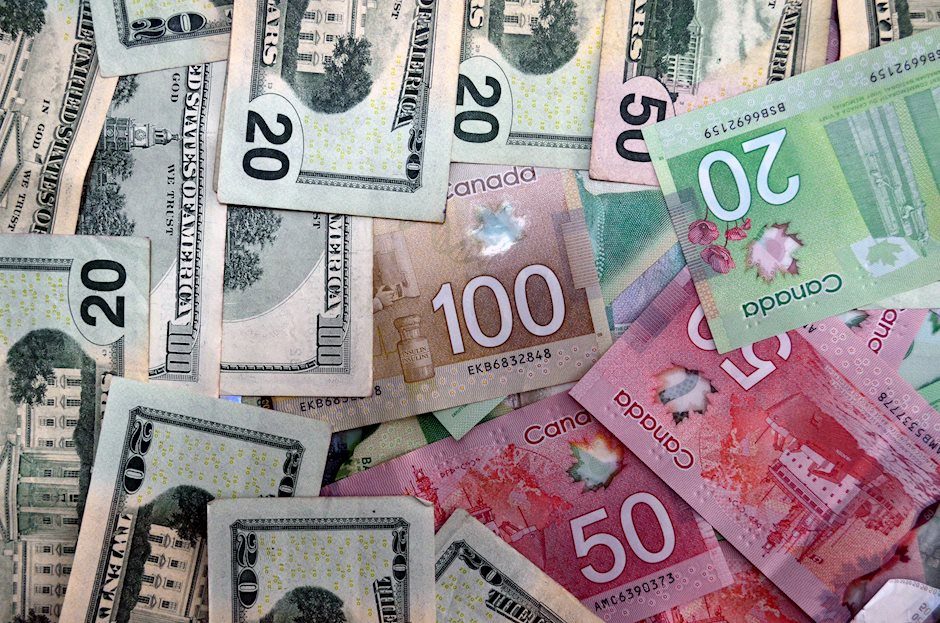USD/CAD remains above 1.3900 near three-month highs, eyes on US GDP
- USD/CAD edges lower ahead of the release of US GDP data.
- The commodity-linked CAD receives support from improved Oil prices.
- The decline in the US Treasury yields weakens the US Dollar.

The USD/CAD pair pulls back from its three-month high of 1.3929, recorded in the previous session, trading around 1.3910 during Wednesday's European session. The Canadian Dollar (CAD), tied to commodities, benefits from stronger Oil prices, as Canada remains the largest crude supplier to the United States (US).
West Texas Intermediate (WTI) Oil price rebounds after two days of losses, trading around $67.70 at the time of writing. Crude Oil prices are bolstered by an unexpected decline in US crude inventories. API US weekly crude Oil stockpiles fell by 0.573 million barrels in the week ending October 25, contrary to expectations of a 2.3 million-barrel increase. Investors now await the EIA crude Oil stockpiles report, due Wednesday.
On Monday, Bank of Canada Governor Tiff Macklem provided more insight into last week’s substantial interest rate cut, describing it as justified following years of sharp rate increases aimed at curbing inflation. Macklem is expected to appear before the House of Commons Finance Committee on Wednesday to discuss the bank’s monetary policy.
The decline of the USD/CAD pair could also be attributed to a weaker US Dollar (USD), driven by lower Treasury yields. The US Dollar Index (DXY), which measures the value of the US Dollar against six other major currencies, trades around 104.10 with 2-year and 10-year yields on US Treasury bonds standing at 4.07% and 4.22%, respectively, at the time of writing.
Traders will likely watch the upcoming release of preliminary US Q3 Gross Domestic Product (GDP) figures and October’s ADP Employment Change, as these could offer important insights into the timing and pace of the Federal Reserve’s (Fed) expected rate cuts. Additionally, US PCE inflation and Nonfarm Payrolls (NFP) will be closely monitored on Thursday and Friday, respectively.
Canadian Dollar FAQs
The key factors driving the Canadian Dollar (CAD) are the level of interest rates set by the Bank of Canada (BoC), the price of Oil, Canada’s largest export, the health of its economy, inflation and the Trade Balance, which is the difference between the value of Canada’s exports versus its imports. Other factors include market sentiment – whether investors are taking on more risky assets (risk-on) or seeking safe-havens (risk-off) – with risk-on being CAD-positive. As its largest trading partner, the health of the US economy is also a key factor influencing the Canadian Dollar.
The Bank of Canada (BoC) has a significant influence on the Canadian Dollar by setting the level of interest rates that banks can lend to one another. This influences the level of interest rates for everyone. The main goal of the BoC is to maintain inflation at 1-3% by adjusting interest rates up or down. Relatively higher interest rates tend to be positive for the CAD. The Bank of Canada can also use quantitative easing and tightening to influence credit conditions, with the former CAD-negative and the latter CAD-positive.
The price of Oil is a key factor impacting the value of the Canadian Dollar. Petroleum is Canada’s biggest export, so Oil price tends to have an immediate impact on the CAD value. Generally, if Oil price rises CAD also goes up, as aggregate demand for the currency increases. The opposite is the case if the price of Oil falls. Higher Oil prices also tend to result in a greater likelihood of a positive Trade Balance, which is also supportive of the CAD.
While inflation had always traditionally been thought of as a negative factor for a currency since it lowers the value of money, the opposite has actually been the case in modern times with the relaxation of cross-border capital controls. Higher inflation tends to lead central banks to put up interest rates which attracts more capital inflows from global investors seeking a lucrative place to keep their money. This increases demand for the local currency, which in Canada’s case is the Canadian Dollar.
Macroeconomic data releases gauge the health of the economy and can have an impact on the Canadian Dollar. Indicators such as GDP, Manufacturing and Services PMIs, employment, and consumer sentiment surveys can all influence the direction of the CAD. A strong economy is good for the Canadian Dollar. Not only does it attract more foreign investment but it may encourage the Bank of Canada to put up interest rates, leading to a stronger currency. If economic data is weak, however, the CAD is likely to fall.
Author

Akhtar Faruqui
FXStreet
Akhtar Faruqui is a Forex Analyst based in New Delhi, India. With a keen eye for market trends and a passion for dissecting complex financial dynamics, he is dedicated to delivering accurate and insightful Forex news and analysis.

















